Why Is My Mobile Phone Service Getting Worse?:
1.Blocking Your Own Antenna
2.Trees
3.Hills and Valleys
4.The Sun
5.Bad Weather
6.Low Battery
7.Heavy Cell Traffic
8.Building Material
Why is my mobile phone service getting worse? Shouldn’t cell phone signals be getting better with each passing year? With all the advancements in technology that happen in the blink of an eye these days, what gives?
No matter what cell provider you use, bad reception sometimes happens. It happens to some people more than others. But it happens to everyone.
The truth is that cellular technology is advancing. But there are external influences that affect mobile signals. Some of these influences still cause problems for users, even as phone tech moves forward.
Most of the time, when your signal goes weak or it drops altogether, it’s not your carrier’s fault. Depending on where you live, these external influences can cause real problems.
Here are 8 of the most common reasons why you are losing phone signal.
1. Blocking Your Own Antenna
Have you ever seen pictures of vintage mobile phones? Other than their large size, their defining characteristic is the long antenna coming out of it.
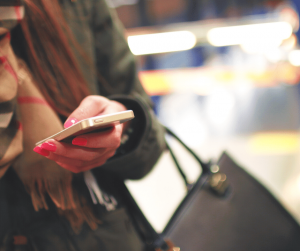
Nowadays our mobile phones have internal antennas. But truth be told, there are aspects of those external antennas that worked better than the internal ones of today. They maintained a surprisingly consistent signal.
Because phones of today are built with the antenna inside the device, you can unknowingly block it. Depending on how you hold the phone, your own hand could be the reason you’re losing signal.
Different phone models have the antenna embedded in different areas. This can make it hard to tell precisely where you should avoid putting your hand. If you need to, search your phone’s model online and find out where the antenna is.
Once you know where it is, you can do your best to avoid covering it.
2. Hills and Valleys
In the introduction, we mentioned that where you live plays a big role in the quality of your reception. Hills and valleys can have a negative effect. This is related to the location of the nearest cell tower.
For example, let’s say you live on the side of a mountain or large hill. And the cell tower is on the other side. This is likely going to result in suboptimal mobile phone reception.

Again, it depends on where you live. But things like buildings, large hills, mountains, and valleys directly affect your signal. They act as physical barriers that the signal has a hard time getting through.
Do you live in a basement? Or work in a hospital? Even working in a large office building can have a negative effect on mobile phone signals.
3. Trees
Even if you’re still in civilization, walking through a thick grove of trees can lower mobile signals. You don’t have to be hiking in the mountains to experience this. A thick canopy of leaves above you acts as a barrier.
Or if your home is surrounded or even covered by big, coniferous trees. People who live in these kinds of places tend to drop calls or have weak signals quite often.
Trees are beautiful and important to our lives. We love them. But they are not friends to mobile signals. They cause many people to ask how do I get the best mobile phone service in my area.

Try your call again when you’re away from heavy tree cover.
4. The Sun
Plumes of gas created from eruptions on the sun’s surface often make their way into the Earth’s atmosphere. Though you and I are mostly unaware that any of this is happening, these phenomena affect cell signals.
Phone signals rely largely on satellites. But when the shock waves from these solar flares are unleashed, it produces small changes in the Earth’s magnetic field. This disrupts your reception.
Cell disturbance caused by these cosmic events can last any amount of time, from mere seconds to much longer.
5. Bad Weather
Because mobile phone signals are basically electromagnetic waves, weather affects them. Common weather events that often result in weak or dropped mobile reception include:
•snow
•ice
•rain
•wind
•lightening
•thunder
•cloud cover
•humidity
It goes without saying that the heavier the storm, the more impact it has on mobile signals. In certain parts of the world where seasonal changes are extreme, reception is greatly affected.
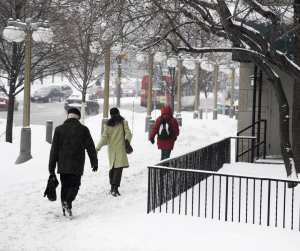
There isn’t much you can do about bad reception at a time when heavy weather is the culprit. When the weather subsides, your reception will likely come back. But at least in this situation, you’ll be able to answer why is my mobile phone service getting worse.
6. Low Battery
This is becoming less of a problem as cellular technology continues to advance. But having low batteries can prevent you from getting the best mobile phone service in your area.
The lower your phone’s battery life is, it’s possible that it will struggle to receive a strong signal. This is because your phone needs sufficient power to perform all of its various functions. And sending/receiving a signal is one of its primary ones.
In order to connect with a mobile phone tower, your phone needs enough energy to do so. If you suddenly have a bad signal, check to see if your phone needs to be charged.
7. Heavy Cell Traffic
Are you at a concert? Or at an amusement park? Maybe you’re sitting in your car in a long line of vehicles, dropping off your kid at school. Are you stuck in bumper-to-bumper traffic on the freeway?

These are common places for mobile phone signals to become weak. That’s because you’re part of a highly condensed population of people all trying to use their phones. Cell towers can get overloaded when there’s suddenly a huge number of phones trying to ping a single tower.
Especially if you enter the vicinity and join lots of others who arrived before you and are already using their phones. Then your chances of a weak signal are higher.
And it’s not just the cell towers that get overwhelmed. In a sports arena, for example, there are likely thousands of people who share the same carrier. Sometimes tens of thousands depending on the situation. In these cases, data speeds inevitably slow down.
8. Building Material
Building material is an extremely common culprit when it comes to dropping calls and having poor reception. In fact, it’s probably the #1 reason for people not receiving the best mobile phone service in their area.
The material that your surroundings are made of, depending on what they are, can block phone signals. This can be the case in your house, at work, in your car, in a mall, at an event, anywhere.
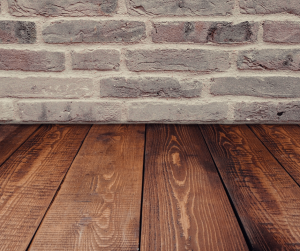
Do you live in a rural area that already gets poor reception? Well, if your roof is made out of tile or metal, it’s making it much worse.
Tinted windows and smart glass, as well as metal, are the two materials that give reception the most problems. But there are many more that still present an issue.
Since this is the biggest reason that people ask why is my mobile phone service getting worse, we’ll go into it in detail. We’ll also use this as an opportunity to explain the basics of how mobile phone signal strength is actually measured.
Is phone reception better when you stand by a window or go outside? If so, it’s almost a sure bet that construction material is blocking your signal.
Before we describe the materials, here’s a quick explanation of how phone signals are measured.
How are Phone Signal’s Measured?
Mobile phone signals are radio frequency waves. 3G and 4G LTE signals are the most commonly used and those are only two kinds of radio waves. Satellite, AM/FM, and WiFi all operate via radio waves as well.
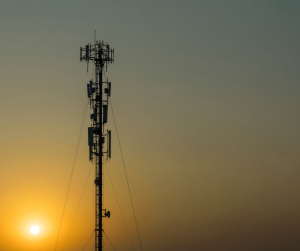
However, the thing about radio waves is that they are easily obstructed. Reliability at scale is and has always been an issue where radio waves are concerned.
Are Mobile Phone Signal Strength Bars the Same Across Carriers?
No. Well, the way you calculate it is. But how individual carriers incorporate that information into their technology is not the same company to company.
One thing that’s interesting to know is this: You know the bars on your phone’s screen that tell you how much reception you have? In reality, it’s only subjective. There’s no industry standard that says “2 bars means this much power” or “full bars means this much power.”
Every carrier decides what it means to them. This means that whatever represents 2 bars for Telstra may mean something else for Optus. Perhaps Vodafone’s 2 bars is the same as Telstra’s 3 bars. You get the picture.
How is Mobile Phone Signal Strength (Reception) Measured?
Answer: decibel milliwatts (dBm) with -50 dBm being a very strong cellular signal and -120 dBm being extremely weak.
You know when you say “My phone has full bars”? Well, what you’re really saying is that your phone is operating at around -50 dBm.

When you say “I don’t have any service”, what you’re saying is that you’re in a dead zone. That’s actually the correct industry terminology. Your signal will get better the closer you get to -50 dBm.
How Does Building Material Affect the Quality of Your Mobile Phone Service?
When building material makes it hard for phone signals to travel, it’s subtracting dB. It’s decreasing it as it tries to enter your home. As it decreases, the dB number gets further away from -50 and closer to -120.
-50 dBm = good. -120 dBm = bad.
Now, here are the materials that really put a damper on phone signal. We’ll include the negative numerical effect each one has on mobile phone service.
Metal
Effect on phone signal: -32 dB to -50 dB.
Tinted & Smart Glass
Effect on phone signal: -24 dB to -50 dB.
Concrete And Cement
Effect on phone signal: -10 dB to -20 dB.
Brick
Effect on phone signal: -8 dB to -28 dB.
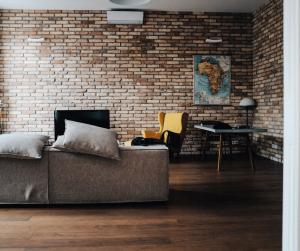
Plaster
Effect on phone signal: -8 dB to -16 dB.
Solid wood
Effect on phone signal: -5 dB to -12 dB.
Plywood
Effect on phone signal: -4 dB to -6 dB.
Clear Glass
Effect on phone signal: -4 dB.
Fiberglass Insulation
Effect on phone signal: -2 dB.
Sheetrock And Drywall
Effect on phone signal: -2 dB.
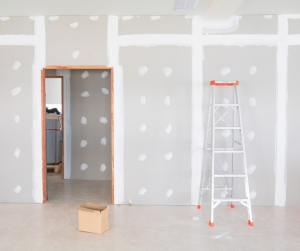
Mother Nature
This is not a building material, obviously. But it’s worth noting the specific negative effect it can have on mobile signals.
Effect on phone signal (rain): -3 dB to -5 dB.
Effect on phone signal (foliage): -7 dB to -20 db.
So, basically, you learned that pretty much anything can have an effect on cell reception. Or at least more than you thought.
So How Do You Determine How to Get the Best Mobile Phone Service in Your Area?
To troubleshoot and work towards getting the best mobile phone service in your area, you need to mentally assess your environment. Or the handful of environments that you’re in the most. Where are you when you usually lose reception? Home? Work?
Let’s say it’s while you’re at home. Okay, so when you’re at home, does your bad reception happen at a particular time of day? A particular time of year? If so, the likely culprit is #7, heavy phone traffic. Seasonal events, for example, that bring more people into town during particular times of the year can certainly affect the performance you get from your phone tower.

Although most of these 8 reasons have easy and free resolutions, some of you may find that these are not enough to resolve your mobile phone signal challenges. Those of you who are in this boat or who wish to avoid the constant hassle of calling near a window/outdoors will want to consider a more convenient and permanent solution.
Now let’s back up. Let’s say your bad reception happens at home but it’s always in a specific spot inside your house. In this case, the culprit is probably #8, building materials. Either that or perhaps in that particular spot, something outside is blocking the line of sight to the phone tower.
How to Improve the Mobile Phone Service in my Area – Conclusion
If you simply can’t answer the question why is my mobile phone service getting worse, do one of two things:
•Call your provider and troubleshoot with them
•Call us and discuss installation of an in building repeater system.
Source: SureCall